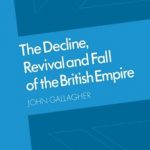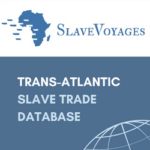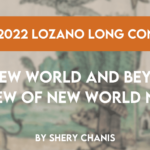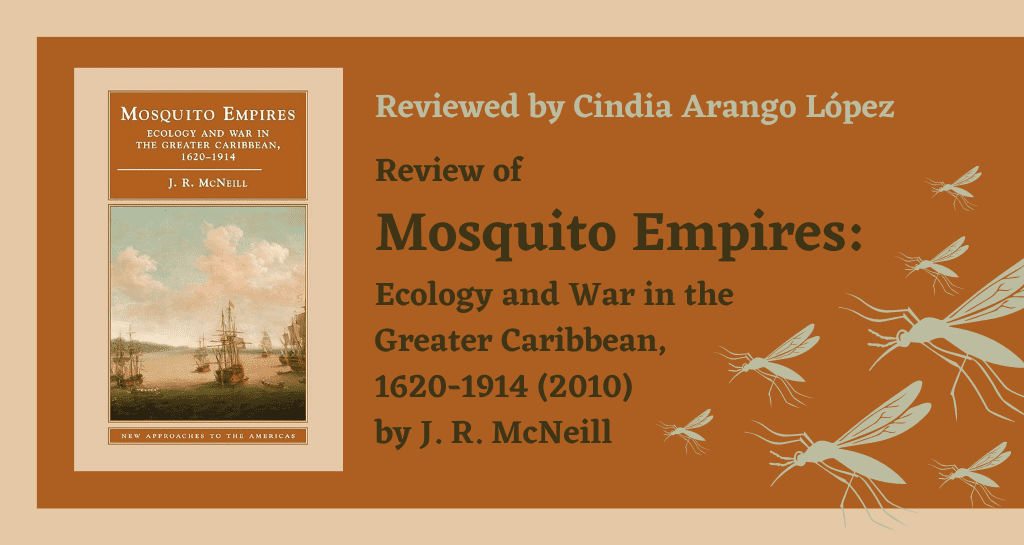
For approximately three centuries, the greater Caribbean hosted the Spanish empire‘s most important social, environmental, and political connections. Interactions between people, the environment, and mosquitoes played an essential part in this history, as John McNeill explains in Mosquito Empires. A professor of history at Georgetown University, McNeill uses his book to explore the links between ecology, disease, and Atlantic politics in the Greater Caribbean from 1620 until 1914. Mosquito Empires won the Albert J. Beveridge prize from the American Historical Association in 2011.
Mosquito Empires serves as an excellent introduction to the field of environmental history. It opens an exciting pathway to understanding how the past’s ecological, political, and epidemic problems continue to impact our present. McNeill makes an important contribution to the field of environmental studies through connections to different fields, including history, politics, epidemiology, climatology, ecology, and others.
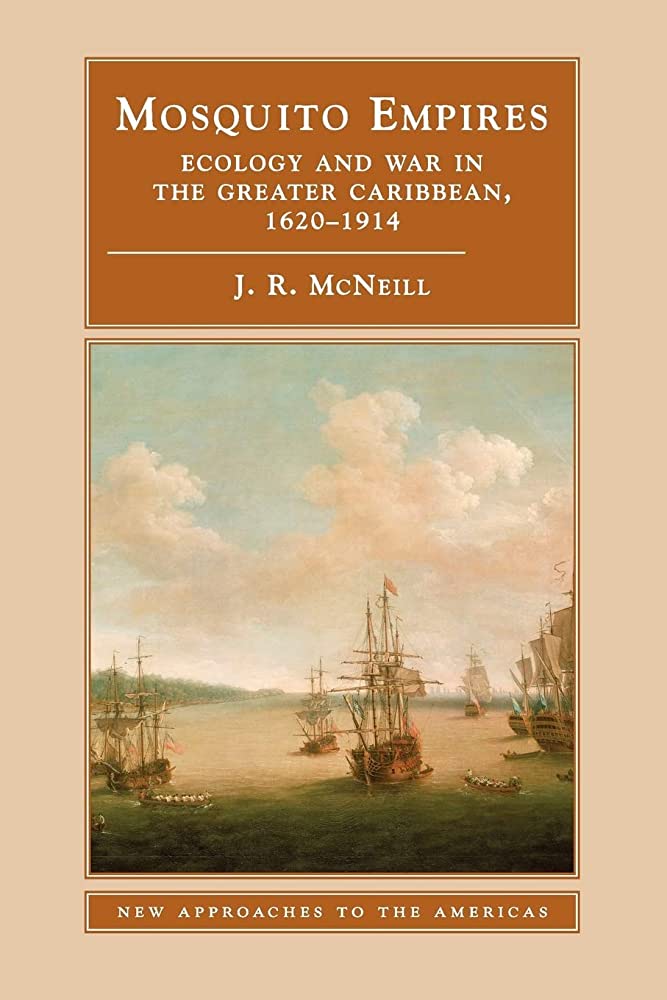
Throughout Mosquito Empires, we find examples that show ecology shaped the history of the Americas because of environmental changes and human agency. Its title is suggestive of the relevance of mosquitoes in an imperial age. McNeill also touches on other subjects, including the transport of animals between continents and the ways in which existing fauna exercised agency to influence how people occupied territory. Furthermore, Mosquito Empires allows us to recognize the role of disease in human and environmental history. As such, it may be even more interesting today, in the wake of the COVID-19 pandemic. As McNeill points out, humans prefer to understand and explain history based on human affairs such as war, revolutions, or conquest. But sometimes, we forget our ecological agency in the environment as a part of our history. McNeill’s book shows co-evolutionary processes bridging the gap between society and nature, demonstrating that the agency of mosquitoes is as important as human agency.
Mosquito Empires also helps us comprehend how the significance and understanding of disease has changed over time. For instance, many diseases did not impact all of the Spanish Empire’s diverse populations in the same way. Diseases encounter different environments, immunities, and susceptibilities as they spread. Moreover, as parts of an ecological chain, certain diseases depended on specific circumstances for transmission: temperature, flora, and land conditions determined how contagious they were. Consequently, McNeill also considers some unique features of malaria and yellow fever, which required mosquitos to spread.
McNeill uses a scalar perspective, beginning his analysis on a global scale before moving towards a local space. Mosquito Empires starts by looking at the Spanish empire from an Atlantic perspective and then focuses on its Caribbean ecology. From 1620 until 1820, the linkages between ecological and political affairs occupied most of the central historical interactions in the Caribbean. Atlantic American geopolitics gave local politics an ecological focus during the early colonial period when Spanish authorities focused on preserving Indigenous and enslaved populations because they provided a labor force for the Spanish empire. The colonizers also built plantations, which occupied most territories in Brazil and the Americans during this period and were more important than silver and gold mines or other sources of economic activity. Also, the creation of plantation systems helped the permanence of mosquitos, producing the conditions necessary for the ongoing existence of diseases. At the same time, geopolitical turbulence in Atlantic America coincided with ecological transformations in the Greater Caribbean. Most of their impacts were related to the introduction of new plants and animals in the Americas, which affected preexisting environmental conditions.
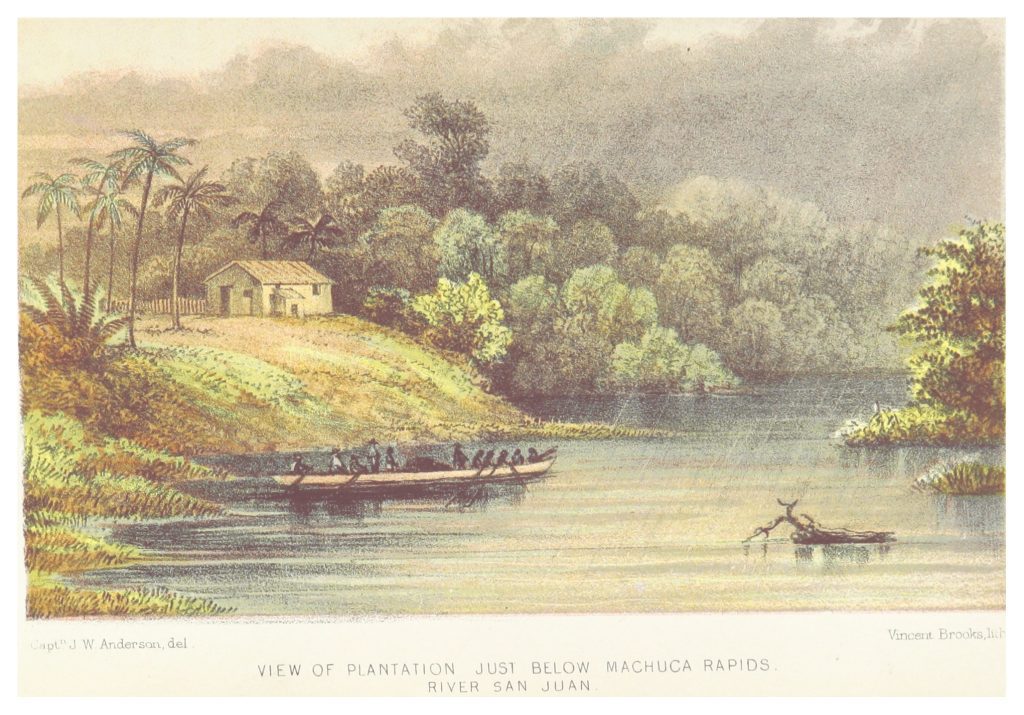
One of the most exciting contributions made by Mosquito Empires is its creation of a unified historical and ecological framework for analyzing epidemiologic problems. Through his book, we can gain new insights into diseases by studying them in a single ecological and historical context. Mosquito Empires considers many variables: demography, ecology, immunity, and climate changes which could affect the spread of diseases in the Caribbean. McNeill compares how yellow fever affected Caribbean locals and European immigrants; he also shows that the disease impacted rural areas (where plantations were located) more than urban ones.
Other factors such as climate change and European immigration, contributed to the spread of diseases, leading to variations across time and space. McNeill’s framework shows how yellow fever’s agency operates and examines its transmission, immunity, and impact on humans and across landscapes. Nonetheless, the disease did not make its history by itself. As McNeill demonstrates, yellow fever acquired historical relevance only when it became an epidemic and had a persistent cycle of transmission. Through this argument, the author shows how human activity converted a diminutive organism into a historical and ecological concern for many years.
Another outstanding feature of McNeill’s book is the diversity of manuscript sources it taps, many of which come from Iberic-American archives. The demographic and health features presented in the book are essential to consider the perception of the disease, but also the knowledge (scientific or empirical) to cure or resolve the epidemics. Case studies examine Brazil, Jamaica, Kourou, Darien, and The Viceroyalty of New Granada. Mosquito Empires performs a valuable service just by gathering so much information. But the information is also critical to the book’s central aim because it documents the disasters created by geopolitical colonialism. According to McNeill, these events show “the power of imported diseases, after the 1640s establishment of yellow fever in the region, to prevent new large-scale European settlement in the Greater Caribbean (p. 135).”
Mosquito Empires serves to remind historians of the role of diseases in our environment. McNeill’s book presents a history of empire’s power as shown through the links between ecological and political matters. McNeill describes the mosquitoes as shields of empire, but readers should also consider them as actors in this geopolitical puzzle. Mosquitoes were protagonists with agency and specific power, capable of defending (through immunity) or destroying (through mortality) an army or a population group; they could also transform the environment.
Cindia Arango López is a doctoral student at UT Austin at the Teresa Lozano Long Institute of Latin American Studies. She studies the relationship between the environmental and social history of the Magdalena River and its navigators, the bogas, during the 18th century in Colombia. She has researched thematics about enslaved history in the colonial period in Colombia. Also, she published relating to the current territorial dynamics of displacement in Colombia from a human geography perspective.
The views and opinions expressed in this article or video are those of the individual author(s) or presenter(s) and do not necessarily reflect the policy or views of the editors at Not Even Past, the UT Department of History, the University of Texas at Austin, or the UT System Board of Regents. Not Even Past is an online public history magazine rather than a peer-reviewed academic journal. While we make efforts to ensure that factual information in articles was obtained from reliable sources, Not Even Past is not responsible for any errors or omissions.
